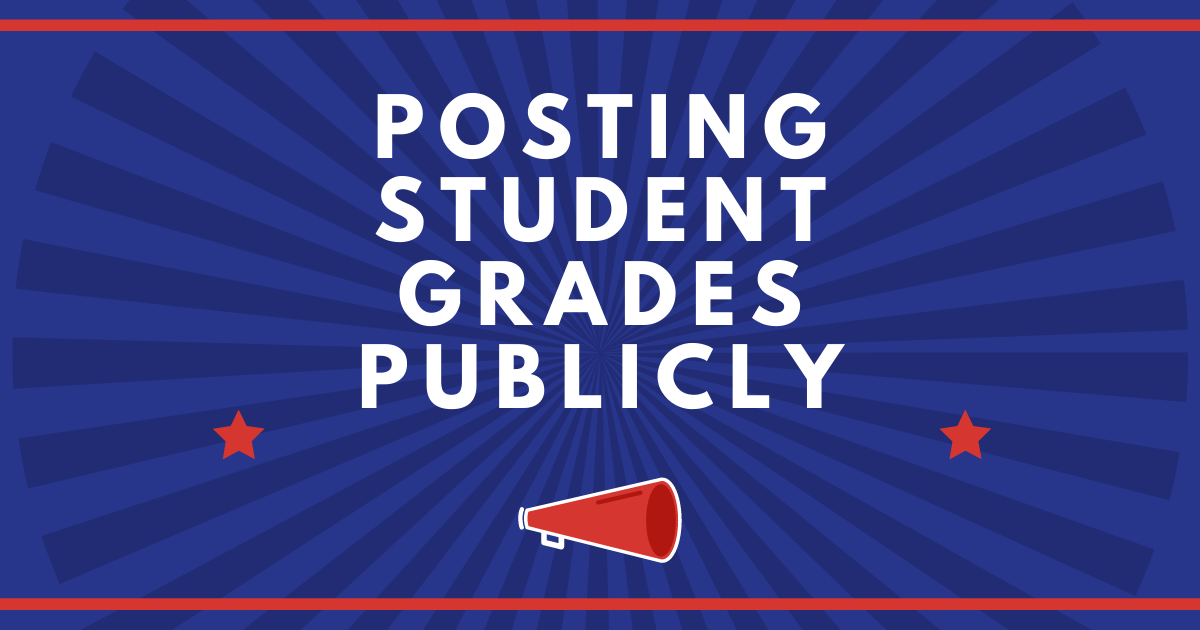
It is standard practice at many schools to post student grades publicly. The merits of this are hotly debated, with the schools in question probably doing it in an attempt to foster a healthy competition between students, in order to motivate them to do even better.
Here we will analyze this practice, in order to see if these supposed benefits actually exist.
Culture
There are certain cultures that highly value academic performance and excellence, and in these cultures posting the grades publicly can actually lead to students being motivated to outperform their peers.
Fostering a competitive spirit in these cultures can actually lead to better performances. However this also fosters a spirit of individual performance, which can be a detriment to working professionally, later on.
Many parts of the world, however, also possess a culture of “nerd-shaming”, which can make high performing students a target of bullying. This could lead to naturally gifted students performing poorly on purpose, in order to avoid the bullying and other negative attention they might get from their peers.
Even in cultures that value academic performance, the public sharing of grades can lead to feelings of superiority, or boasting by those that do well. On the other hand, students performing poorly may, instead, become withdrawn and anti-social, as a result of shame.
The previously stated assumption of schools engaging in this practice in order to inspire competition may not always be true. Given the many recorded instances of students being berated and otherwise verbally, and physically, abused by teachers and headmasters, also invites a discussion on this being done intentionally in order to shame students into performing well.
This practice can also be considered discriminatory, as students who suffer from learning disabilities, have poor economic circumstances, or are otherwise considered at-risk.
Individual Student
An aspect of this that is impossible to ignore, is the humiliation suffered by the students that do poorly. As stated previously, the shame of having everyone know how poorly you’ve done can have a great impact on the young mind. Children can become withdrawn due to this shame, or engage in other anti-social behavior.
This can lead to isolation, and mental health problems like depression and anxiety, issues that have the potential to follow one throughout their lives. So publicly posting the results of students that do poorly can lead to a domino effect that has the potential to ruin their entire lives.
Another important aspect to consider are at-risk factors. The term “at-risk” is used to describe a student, or a group of students, with a higher than normal likelihood of academic failure, or dropping out of school. It has been used to describe students whose circumstances make it more likely for them to be unable to finish their education.
These circumstances could include homelessness, incarceration, teenage pregnancy, serious health issues, domestic violence, transiency, or it may refer to learning disabilities, low test scores, disciplinary problems, grade retentions, or other learning-related factors that could adversely impact their educational performance.
While generally used to describe a group of students, teachers also use the term to describe a specific student, in whom some of the above listed circumstances or disabilities have been observed. These students often perform poorly in school, through no fault of their own. This could lead to an exposure of their circumstances and, with children generally being insensitive, bullying from their peers.
Grades
Are grades themselves actually all that effective? One would assume that grades are provided to students to allow them to measure how well they’ve retained their lessons, and most people are willing to accept this explanation. However, it’s time to challenge that assumption.
Let’s examine two very basic school subjects: English and Math. For the latter, grades are very clear cut. Most mathematical problems, while they can have different methods, have a set answer, so grading is simple.
An answer is either correct, or incorrect. For English, however, things are quite different. While solutions for comprehension, and fill in the blank sentence structure based questions can be set, other skills such as essay writing are not quite as easy to quantify. Grades received for essays are mostly subjective, dependent on writing skills the individual teacher most values.
The point I’m trying to make is that the grade is not a reflection of the work put in by the student, which I think is a better way to judge the quality of a work. Yes, the end product matters, but the steps taken to reach that end product is in my experience often more important. And these steps are especially more important in areas of study that have less concrete methods of studying, like English.
The professor can’t see the seemingly endless number of hours that you put into crafting a paper. All they can see is the finished product, and that is what is graded. Unfortunately, many people are unable to put out a finished product that is as impressive as the process that it took to create that product.
So a thorough analysis of the practice of posting grades publicly shows that it has many detriments, and very few observable advantages. Do you agree with our findings? Let us know in the comments below.


